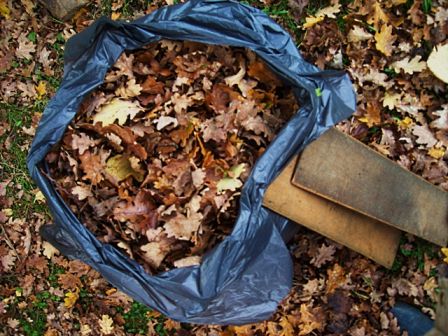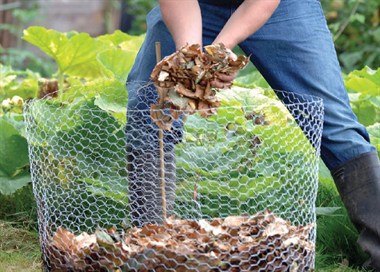How To Make Leaf Mould

We are now in the heart of Autumn and are enjoying the wonderful Autumn colours and cooler darker evenings. Many trees will have already shed their leaves and what better way to take advantage of this than to recycle these fallen leaves into leaf mould. Leaf mould is one of the easiest ways to make free garden compost. Leaf mould also has a variety of other uses in our garden and is very simple to make. In this guide we offer advice on how to make leaf mould in your own garden as well as offering some tips on how to use the leaf mould.
About Leaf Mould
Leaf mould is formed by the decaying of leaves over a period of time and produces a high quality soil conditioner. The majority of leaves can be turned into leaf mould however some take longer to compost than others. The best kind of leaves come from Oak, Beech or Hornbeam trees as these leaves will decay with very little assistance. These are ideal if you are looking for a high quality product that takes little time to produce. Thicker leaves such as the ones from sycamore trees require shredding prior to adding to the leaf pile as these take much longer to break down.
If you are looking to create leaf mould that can be used for mulching you can also collect pine needles. You should place these in a separate pile to the leaves as the pine needles will create an acidic leaf mould that is perfect for mulching.
When to Make Leaf Mould
Leaf mould can be made all year round however Autumn is the season where most deciduous trees shed their leaves. You should start collecting the leaves in these months and begin to make your leaf mould.
Pine needles can be collected throughout the year however pine tree’s tend to drop their needles during Spring therefore this would be the perfect time to start collecting these.
How To Make The Leaf Mould
Collecting Leaves:
Begin collecting leaves to start your leaf mould pile. If you have trees in your garden you could collect the leaves from here however you can also look to public places for your leaves. Parks and quieter streets are ideal as the leaves fallen next to busy roads are likely to be full of pollutant from vehicles and you would not want this entering into your vegetable or plant beds. Pick a day when the weather is dry and still, this will make it easier for you to collect your leaves.
If the weather is windy rake in the same direction that the wind is blowing this will allow you to collect the leaves. Ideally a leaf vacuum would be ideal as it allows you to collect larger volumes of leaves.
If you are lucky enough to have fallen leaves in your own garden collect the leaves using a rotary mower. Not only will this make it easier for you to collect it will also speed up the decaying process as the mower shreds the leaves. Additionally the rotary mower will collect grass clippings and combine it with the leaves this will add further nutrients to your leaf mould.
Making the Leaf Mould:
There are 2 ways you can create leaf mould. If you have a small garden you can opt for making the leaf mould in a bin liner this will save space. However if space is not an issue try creating a leaf bin. This is a simple structure that takes little time to assemble however is very effective at helping to store large amounts of leaves.
Saving Leaves in a Bin Bag:
Start by placing the leaves into a bin liner. You should moisten them if they are dry. Pierce a hole in the bin liner with a fork to make sure air will reach the leaves. Tie the bin liner loosely and store the bags away for a few years. These bin liners can be stored on top of each other therefore taking up little space in your garden.

Making a Leaf Bin:
To make a leaf bin make a square or round frame out of wire or something similar. The wire should be supported at the corner or around the circle with canes. Ideally you should position your leaf bin in a sheltered are of your garden to make sure the leaves don’t blow away. Start adding as many leaves as you can to the leaf pile this will help speed up the decaying process. You should moisten the leaves every so often if they are looking a little dry.

Using Leaf Mould
High quality leaf mould that has fully decayed (older than 2 years) can be used as a seed sowing compost. It can also be used as a potting compost and can be combined with top quality soil or sharp sand.
Leaf mould that is less than 2 years old or the pine need leaf mould can be used as a mulch in potted plants or flower beds. This leaf mould can also be used as a soil improver as well as an Autumn top dressing for lawns.
At Gravelmaster we love to receive customer photographs. Feel free to send us in a photo of your leaf mould pile where we will share it on our Twitter/ Facebook and Pinterest page. Please send all images to sales@gravelmaster.co.uk




